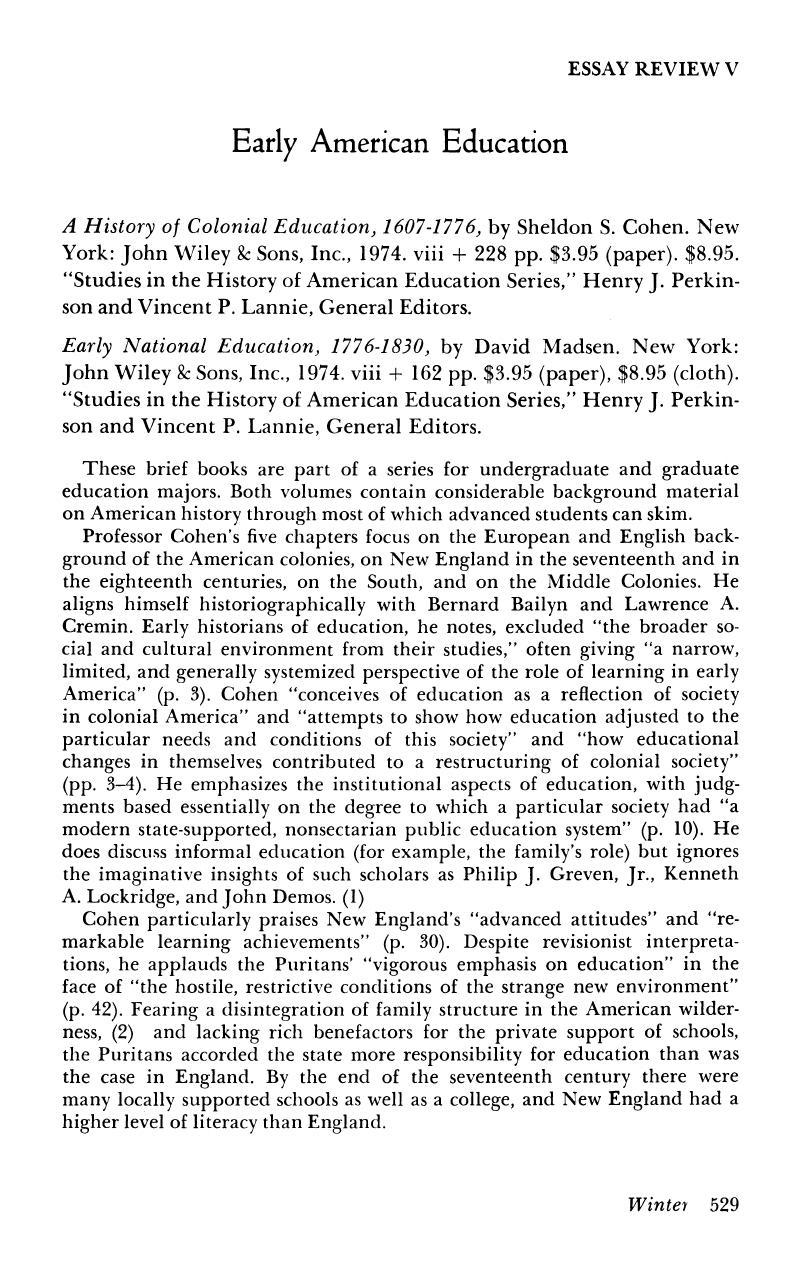No CrossRef data available.
Published online by Cambridge University Press: 24 February 2017

1. See particularly Greven, Philip J. Jr., Four Generations: Population, Land, and Family in Colonial Andover, Massachusetts (Ithaca, New York, 1970); Lockridge, Kenneth A., “The Population of Dedham, Massachusetts, 1636–1736,” Economic History Review, 2d ser., 19 (1966): 318–344; Demos, John, A Little Commonwealth: Family Life in Plymouth Colony (New York, 1970).Google Scholar
2. On Puritan fear of the wilderness, Kenneth A. Lockridge writes that “in reality the wilderness was never much of a threat to maintaining the moderate levels of literacy and of concomitant socialization which prevailed among the settlers of New England. Only a few rhetoricians perceived such a threat, and the Puritan concern for education proved ample to counter any danger and slowly to expand literacy.” Lockridge, Kenneth A., Literacy in Colonial New England: An Enquiry into the Social Context of Literacy in the Early Modern West (New York, 1974), p. 44.Google Scholar